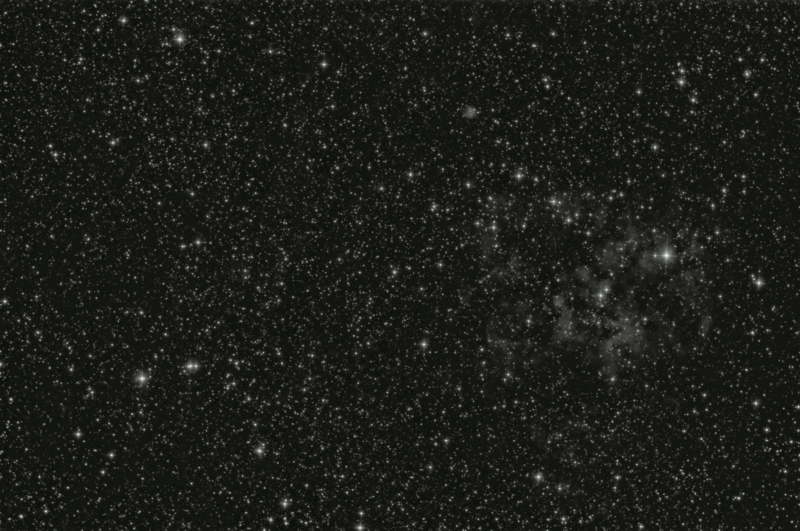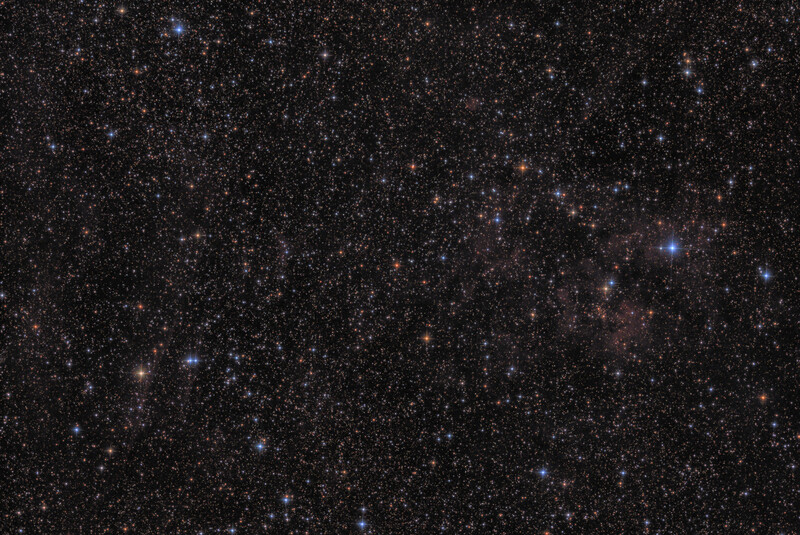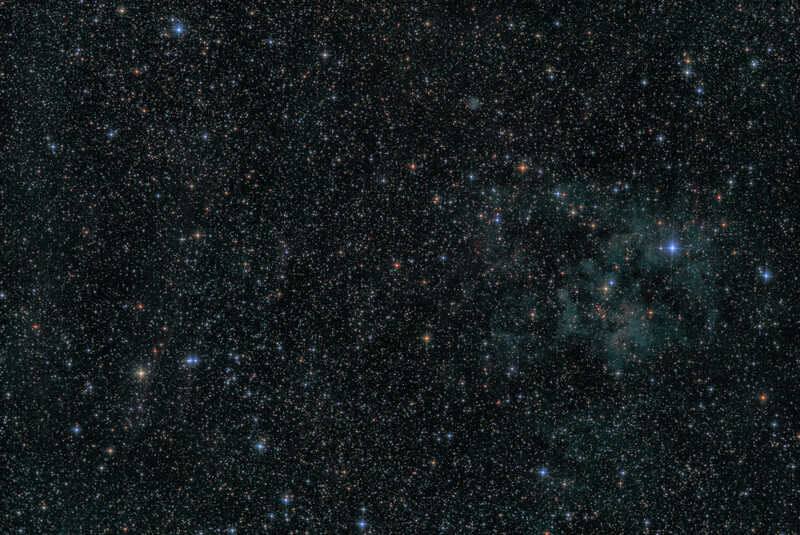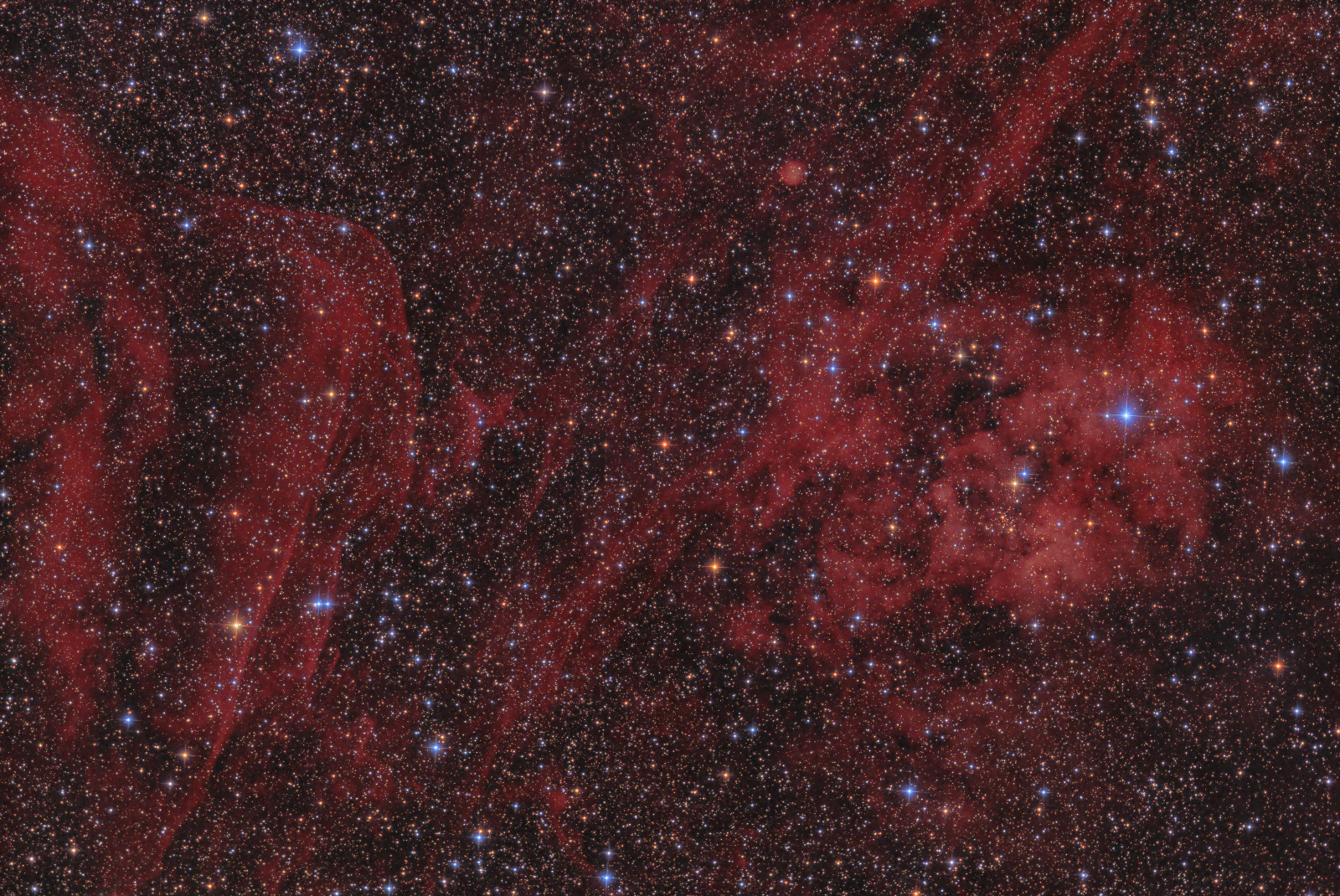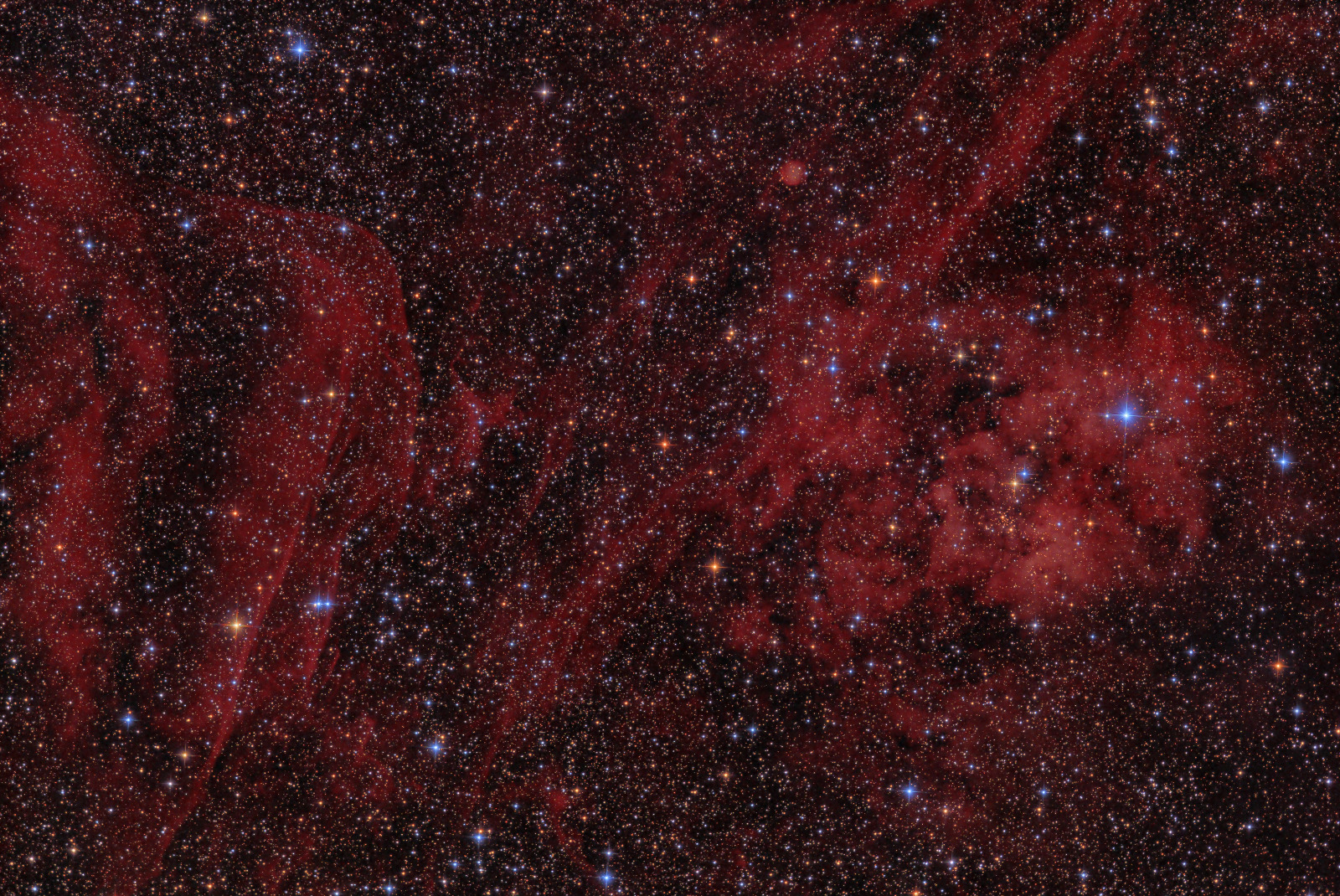An Sh2-115 journey
Posted: Mon Jul 31, 2023 4:53 pm
...the journey may not be complete - more fiddling is always possible. 
So this target came up and initially it seemed a good candidate for SHO, as there are quite a few beautiful tricolor images of it out there.
Alas, I kind of think all that is a little misleading.
This object and surrounds is a faint emissions region in Cygnus. The Ha itself is quite faint, though with 5 hours integration captured over a couple nights, it stretches out quite nicely. OIII was another story. Again I took two nights to capture about 5 hours, and while there's a little something there when stretched, the handful of OIII puffs are completely matched by dominant Ha. I tried an HOO, even one attempt dismissing any use of OIII for the Synth L, but the results were not appealing after the heavy throttling required to see even the faintest of blue (or ST being ST - teal).
This little blinky shows not only the disparity between Ha and OIII, but how any oxygen there is gets overlaid by strong Ha.
From discussions, I got the sense that SII was similarly sparse, so instead I acquired 2.5h of LRGB my next night out.
Here's a look at just the visual spectrum, giving a clue of just how faint even the "dominant" Ha is!
With the broadband as the base image, I tried both an LRGBHa and LRGBOIII using NB Accent. These worked reasonably well for what they were, and the stars looked pretty good (SVD worked fine), at least in versions not so heavily downsampled. I did use a pink reversal on the Ha version but not the OIII. Here's the LRGBOIII.
So this target came up and initially it seemed a good candidate for SHO, as there are quite a few beautiful tricolor images of it out there.
Alas, I kind of think all that is a little misleading.
This object and surrounds is a faint emissions region in Cygnus. The Ha itself is quite faint, though with 5 hours integration captured over a couple nights, it stretches out quite nicely. OIII was another story. Again I took two nights to capture about 5 hours, and while there's a little something there when stretched, the handful of OIII puffs are completely matched by dominant Ha. I tried an HOO, even one attempt dismissing any use of OIII for the Synth L, but the results were not appealing after the heavy throttling required to see even the faintest of blue (or ST being ST - teal).
This little blinky shows not only the disparity between Ha and OIII, but how any oxygen there is gets overlaid by strong Ha.
From discussions, I got the sense that SII was similarly sparse, so instead I acquired 2.5h of LRGB my next night out.
Here's a look at just the visual spectrum, giving a clue of just how faint even the "dominant" Ha is!
With the broadband as the base image, I tried both an LRGBHa and LRGBOIII using NB Accent. These worked reasonably well for what they were, and the stars looked pretty good (SVD worked fine), at least in versions not so heavily downsampled. I did use a pink reversal on the Ha version but not the OIII. Here's the LRGBOIII.
